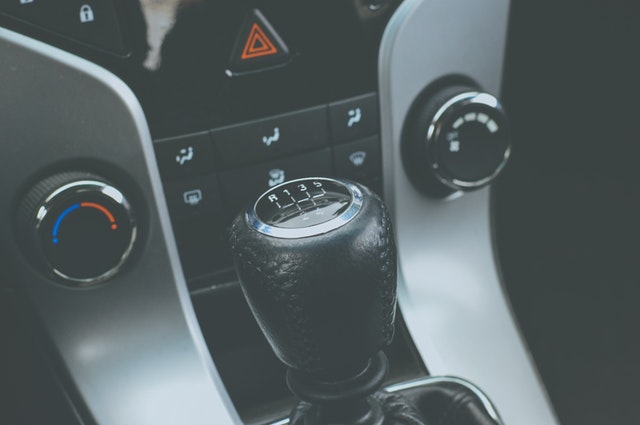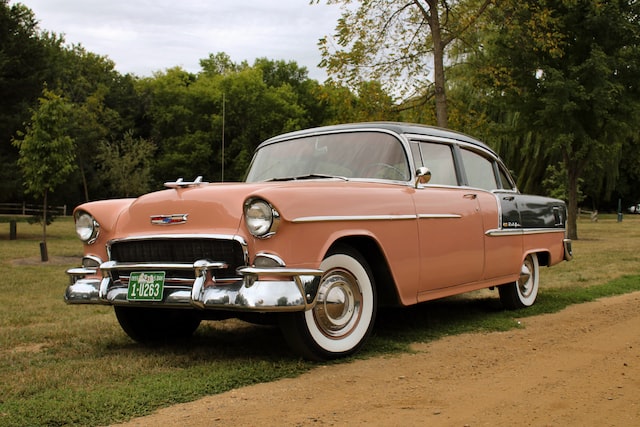It’s known as learning to drive a manual or learning to drive a stick shift. It doesn’t matter what you call it; it’s the same thing. Many people never learn to drive a car with a manual transmission, sometimes known as a stick shift. You will be able to drive any sort of vehicle, whether automatic or manual if you can drive a stick shift. When learning to drive this type of vehicle, it is better to practice in a large parking lot or on an empty street. Learning to drive a stick shift is similar to learning to ride a bicycle for many drivers: it appears impossible at first, but once you master the skill, you will never struggle again. The guidelines below will serve as a starting point for your first few tries at driving a car with a stick shift.
If you’re planning to get a driver’s license, let’s get started with our free DMV practice test 2025 to get ready for your coming exam!
1. Understand the Different Pedals
Before you start driving a stick shift, you should be aware of the differences between this type of vehicle and those with automatic transmissions. Examine the three pedals at your feet while seated in the driver’s seat.
On the left, the clutch is the first pedal. Only cars with manual transmissions have this pedal. The brake is located on the middle pedal. The accelerator is located on the right pedal. The clutch will be operated with your left foot, while the brake and accelerator will be operated with your right foot.
The system is disengaged when you push in the clutch pedal or step down with your left foot on the clutch pedal. When you take your foot off the clutch pedal, the friction in the assembly begins to move, causing your vehicle to accelerate.
Understand the Gear Shifter
Check the gear shifter before starting the car. A gear shifter is usually located in the middle of the passenger and driver seats in cars with manual transmissions.

The first gear is usually found in the upper left corner, and the next four or five gears rotate from left to right, from top to bottom. On most stick shift vehicles, the gear locations will be clearly marked. The vehicle will be neutral if the gear shift is in the center, and you should be able to simply move the gear shifter back and forth.
Start the Car
To begin a stick shift, place your left foot on the floorboard and press the clutch all the way down. Make sure the gear shifter is in neutral, then turn the key to start the engine. You can take your foot off the clutch if you’re sure the automobile is in neutral. Make that the parking or emergency brakes are not engaged.
Push in the Clutch
Press the clutch with your left foot and the brake, or the center pedal, with your right foot to get ready to operate a manual vehicle.
Put the Car into First Gear Next
Then, using the gear changer in the first position, put the transmission in the first gear. This should be the place on the gearbox that is furthest to the left and at the top half.
Let Off the Brake
Place your right foot on the brake pedal and release it. The vehicle should move very little if you are on a flat surface, which is great for your first attempt.
Let Off the Clutch and Push on the Throttle
With your left foot, gradually reduce the amount of pressure you apply to the clutch. You may hear the vehicle begin to slowly roll forward, depending on the vehicle. Begin to press the accelerator with your right foot as you slowly release the clutch. It’s a delicate movement. Excessive acceleration is not recommended. Keep in mind that first gear is only intended for speeds of up to fifteen miles per hour.
Know When to Change Gears
At some time, you’ll have totally released the clutch and will just be using your right foot to press the accelerator. In first gear, you’ll be driving. Continue to increase your speed until you need to move into second gear. You can use the sound of the engine, your RPM gauge, and/or your speed to determine when you need to shift gears, depending on your vehicle.
Upshift to Second Gear and Repeat
The last step to know how to drive a stick shift is to upshift to second gear and repeat. At some time, you’ll have totally released the clutch and will just be using your right foot to press the accelerator. In first gear, you’ll be driving. Continue to increase your speed until you need to move into second gear. You can use the sound of the engine, your RPM gauge, and/or your speed to determine when you need to shift gears, depending on your vehicle.
Downshifting
When slowing down and downshifting, follow the same steps as when accelerating, except this time from a higher to a lower gear. When downshifting, you may notice greater revs, so make sure to utilize more of the accelerator pedal. The car will decelerate more sharply if you don’t accelerate enough.
Going in Reverse
You won’t always have to use the gas pedal when you need to reverse the vehicle. If you do, it will only be a little bit. When you’ve come to a complete stop, put the car in reverse and slowly let out the clutch while keeping your other foot on the brake.
Parking
Because manual autos lack a “Park” gear, it is critical to always use the emergency parking brake. You’ll also want to put the car in gear, not neutral so that the emergency brake and the gears are both working to keep your automobile from moving or rolling.
Starting on a Hill
Starting on a hill is difficult to learn since you will most likely roll back and risk colliding with a car behind you. Use the parking brake to easily start a manual vehicle on a hill. Position the wheel in the correct direction, then release the clutch and shift to the throttle as usual. Release the parking brake and engage the clutch once you feel the car against it.
When parking a stick shift, ensure the gear shifter is in first gear and the clutch is locked until the ignition is switched off. You’ll be an expert in no time with a little practice and some advice from experienced stick shift drivers to know how to drive a stick shift.

UT Utah License Renewal: A 2025 Comprehensive Guide
Discover the ultimate guide to Utah license renewal! This comprehensive guide delves into the intricacies of renewing your driver's license in Utah,...
February 13, 2023

South Carolina S.C. Driver's License Renewal
The South Carolina S.C. driver's license renewal process is designed to be comprehensive, taking into consideration eligibility requirements, renewal methods,...
February 13, 2023

Pennsylvania PA DMV License Renewal: A 2025 Full Guide
The Pennsylvania PA DMV license renewal process is designed to be comprehensive, taking into consideration eligibility requirements, renewal methods,...
February 10, 2023
